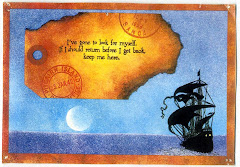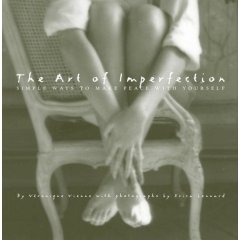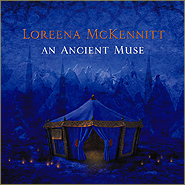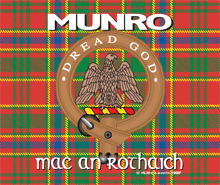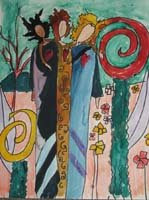Artist Unknown
The Children of Lir is a story which has been ingrained in Irish folklore and legend for centuries. It has also inspired many painters, from the pre-Raphaelites to modern artists. Here's one version, accompanied by my favorite images from the web:
Long ago there was a king in Ireland called Lir. He had four beautiful children, a son, a daughter and twin sons. Their mother died and King Lir wanted them to have a new mother. So it came to pass that he married his wife’s sister, Aoife (Oifa). Then suddenly Aoife became jealous of the king’s children because she saw their great happiness with the him. So she decided to get rid of the children.
On a beautiful summer day she took the children out to a lake for a swim. As soon as the children went into the water, she cast a spell on them turning them into swans. She herself was taken away by a dark cloud from the north and was never seen again. King Lir was in deep grief because of what had happened to his children. However, Aoife’s spell had not taken away the children’s human voices and they were to be set free from the spell in 900 years' time when St. Patrick would come to Ireland and they would hear the sound of the first Christian bells.
For 900 years the swans experienced great hardships but it never kept them from singing with their beautiful voices. People came from near and far to see the swans who could talk and sing. Then one day, when 900 years had passed, some people came and laid their hands on the birds to steal them but the swans became humans again, although 900 years old. They were quickly baptized and their souls were taken straight up to heaven. They were The Children of Lir.
Illustration from a collection of myths
published in 1915
Irish postage stamp designed by P. J. Lynch
by John Duncan
As with all legends, there are many variations - contrasting versions of events, names, and places. Here's another version of The Children of Lir, accompanied by more beautiful paintings:
There once was a man called Lir, who was happily married with three children. The eldest a girl and the two youngest boys. He loved his family with all his heart until one day, his wife passed away. Horrified at the thought of his children living without a mother, Lir married a beautiful woman named Aoife.
There once was a man called Lir, who was happily married with three children. The eldest a girl and the two youngest boys. He loved his family with all his heart until one day, his wife passed away. Horrified at the thought of his children living without a mother, Lir married a beautiful woman named Aoife.
Aoife was terribly jealous of her new husband’s love for his children as he adored them far more than he did her. Consumed by jealousy, she ordered one of the servants to kill the children. When he refused, she used her magic instead to turn them into swans.
The children were doomed to wander until the spell could be broken if they were blessed by a monk. To stay together, their father fashioned a gold chain to fit around all three of their necks so they would not be tossed apart on the raging waters. They spent 300 years on Lough Derravaragh, 300 years in the Sea of Moyle and 300 years in Irrus Domnann Erris.
Eventually, the swans were found by monks belonging to a monastery on an island. They blessed the swans and they changed back into humans, but being 900 years old, they were withered and ancient. The three were buried together, the gold chain still linking their necks.
by P. J. Lynch
by Matt Doyle
Artist Unknown
And here's yet another version which combines elements of the first two:
And here's yet another version which combines elements of the first two:
Long ago there was a king in Ireland called Lir who was the father of four beautiful children, a son, a daughter and twin sons. Their mother (daughter of the High King of Ireland) died when they were still young and needing loving care. And so it came about that King Lir, who dearly loved his four children and wanted them to have a new mother, married his wife's sister, Aoife, and gave them into her charge.
But Aoife, seeing King Lir playing with the children and giving them so much of his time, became jealous of them and thought how she might have her king all to herself and the children out of the way. One night she secretly bargained with a Druid for the use of his magic wand and made her plans while the children were asleep.
Next morning,when they woke to a beautiful summer's day, Aoife had perfected her plan. "Come with me," she said to the children, "Today I am going to take you to the lake and when the sun gets hot you can all go into the cool water for a swim." When noonday came and the sun was at its height in the sky Aoife saw a dark cloud coming from the north and, fearing her plan would be spoiled, shouted "Quickly now, into the water with you all!" Then using the Druid's magic wand Aoife cast a spell on the four children, turning them one by one into swans.
The dark cloud from the north turned black, shut out the sun and burst into thunder. With a scream Aoife disappeared into the cloud and was never seen again. But Aoife, with her Druid's wand, had not taken away the children's human voices; she had told them they would be set free again from the spell in 900 years' time when St. Patrick would come to Ireland and they would hear the sound of the first Christian bells.
And so at the end of 300 years on lake Davra, 300 years on the sea of Moyle and another 300 years on the lake isle of Glora in Mayo, the day came when they heard the distant sound of one of the first Christian bells to ring in Ireland. They immediately followed the sound until they came to the house of a Christian called Caomhog and told him what had happened to them so long ago.
They were lovingly cared for by the people of the house and people came from far and near to see the swans who could talk and sing. Then one day a princess sent her servants to try and steal the swans. But just as the servants laid hands on them the time had come for the swans to become humans again and the servants ran away terrified.
Now that the swans were again human, although 900 years old, Caomhog had them baptized and the bells rang out at their christening. Soon afterwards, when the siblings had died of old age, Caomhog dreamed that he saw four beautiful children - a boy, his sister and two twin brothers - flying out over the land, then straight up to heaven, and he knew they really were The Children of Lir.
"The Enchantment" by Jim FitzPatrick
Artist Unknown
by Ed Org
There are many more variations upon this legend, most of which are way longer. I chose these three variations because of their length and their child-like simplicity. To find other variations, just Google "The Children of Lir".
The illustration by P. J. Lynch (after the second version), comes from the book "The Names Upon the Harp: Irish Myth and Legend," by Marie Heaney. He illustrated the eight stories and one poem contained in this marvelous book, which I wrote about in greater depth last year at http://celticanamcara.blogspot.com/2011/04/names-upon-harp-book-of-irish-myth-and.html.
"The Names Upon the Harp", a great
read for this St. Patrick's Day!

















.jpg)















